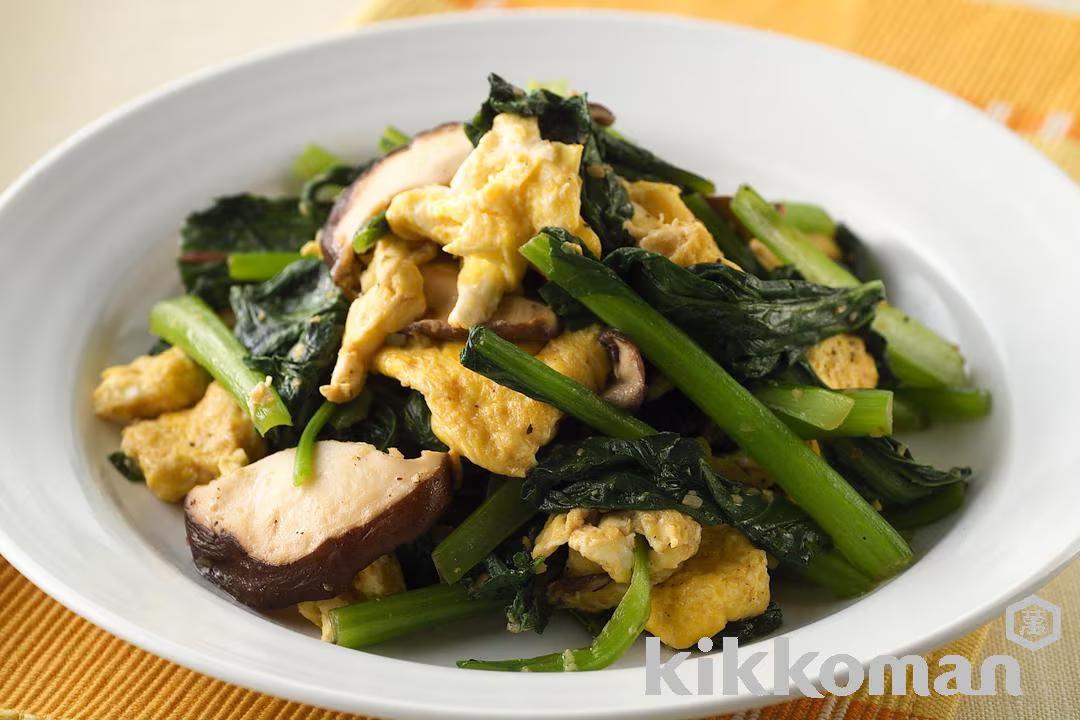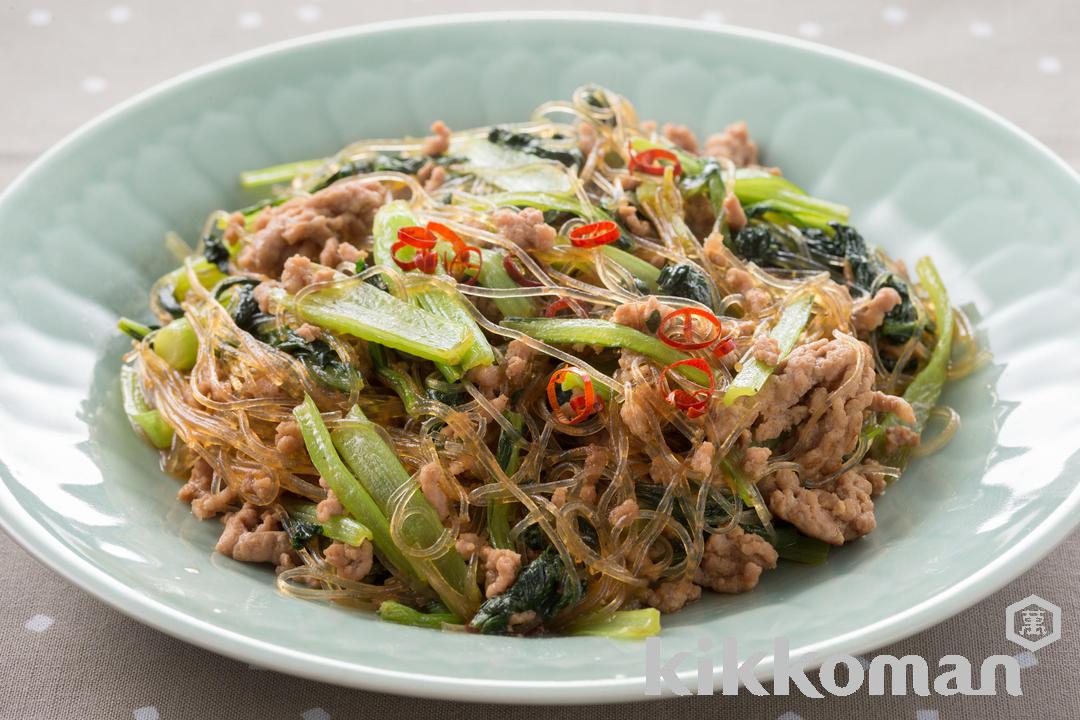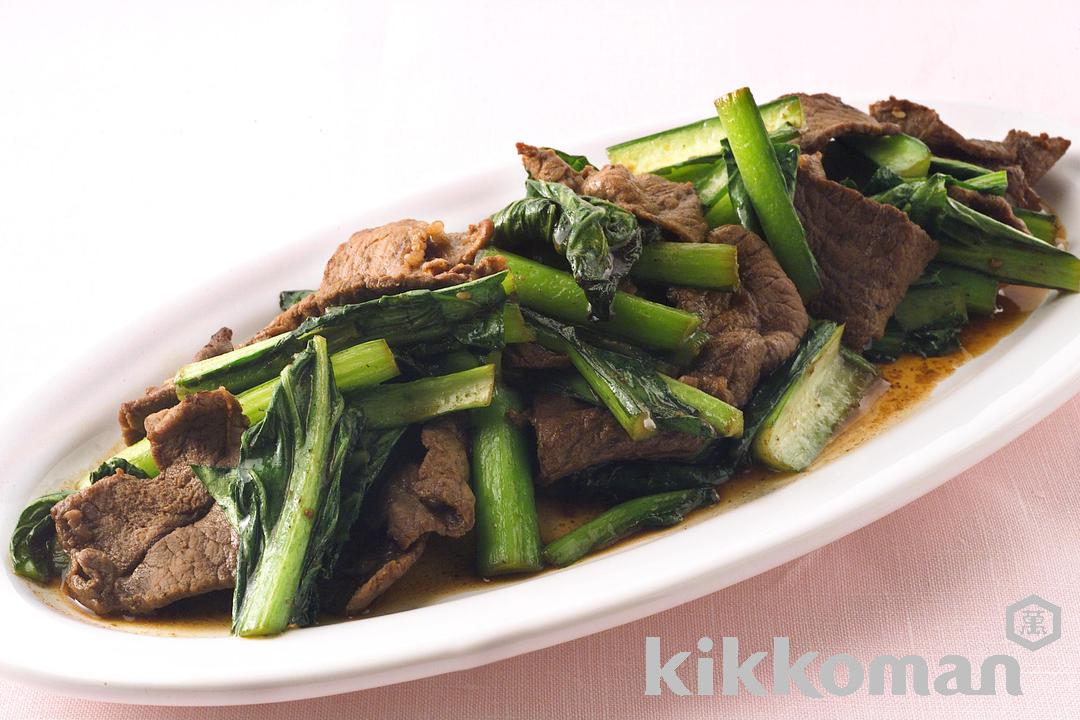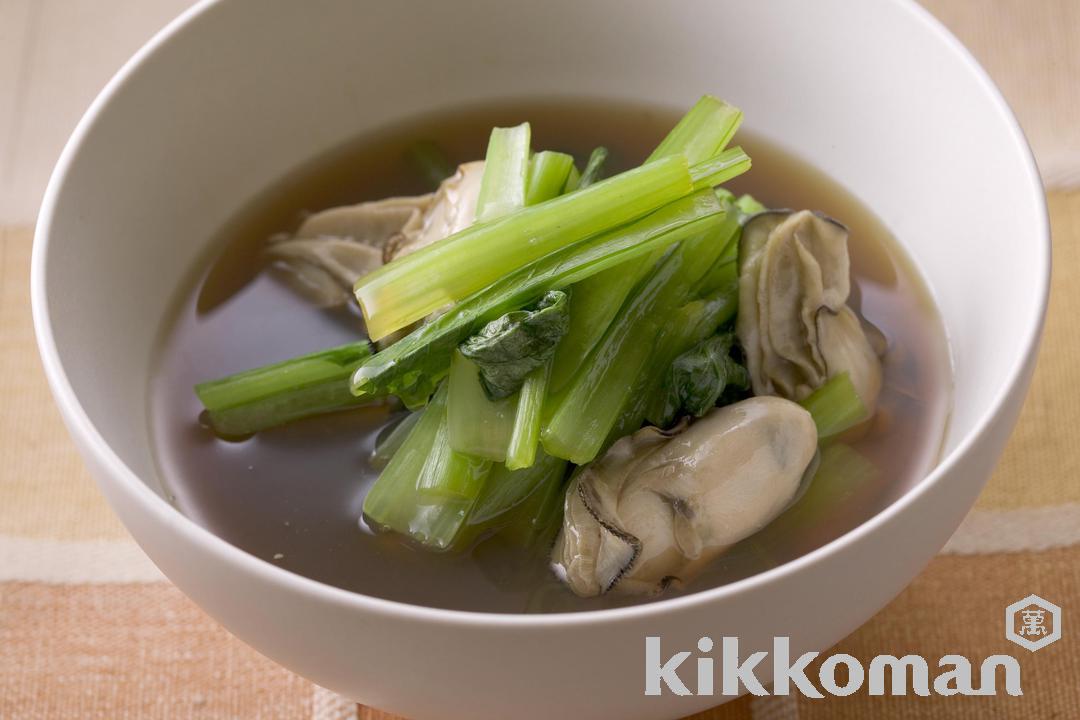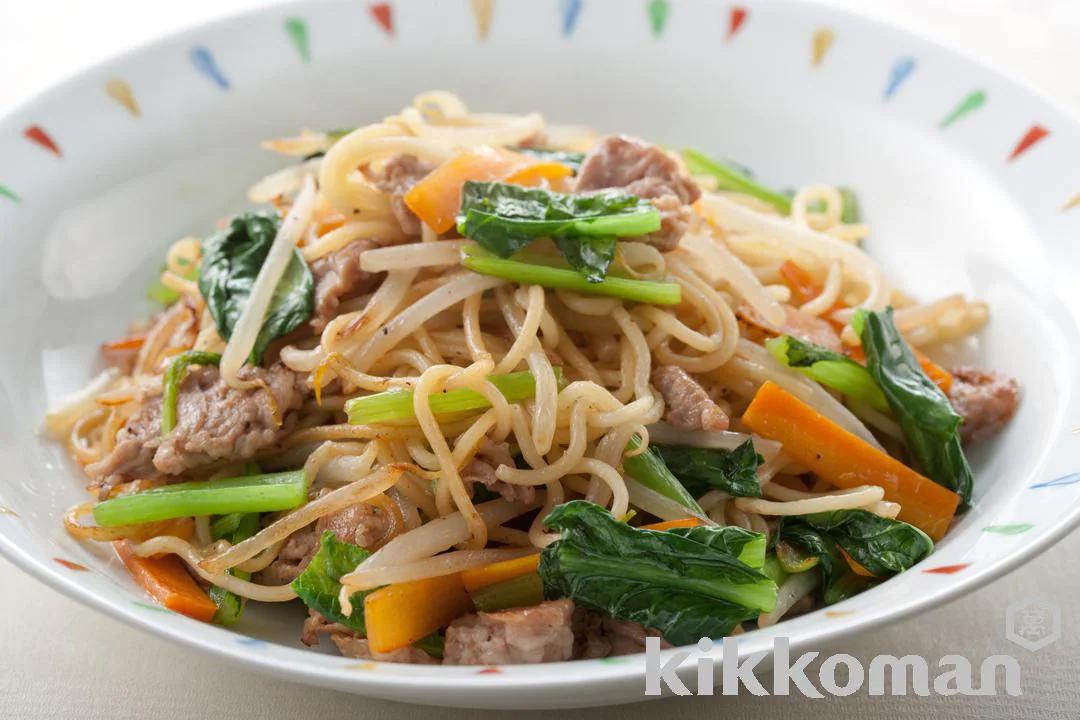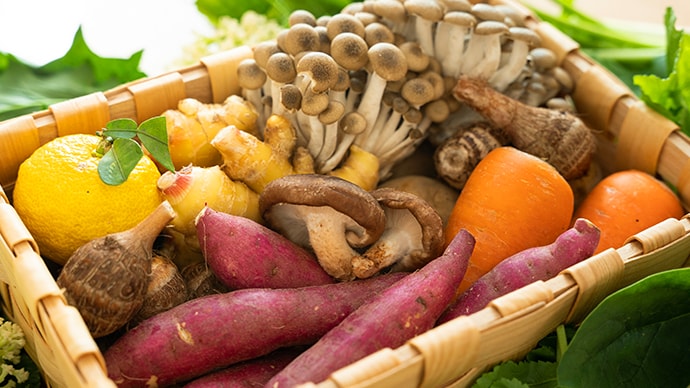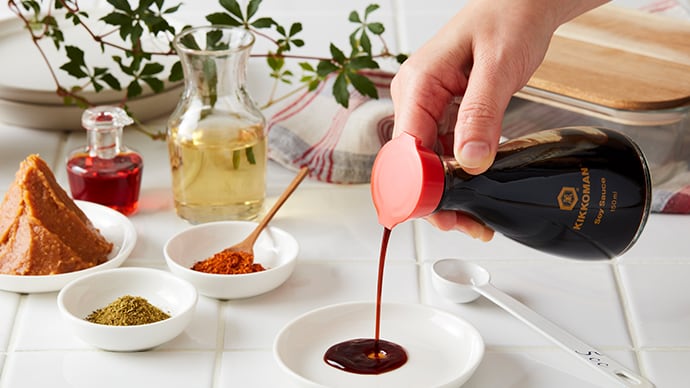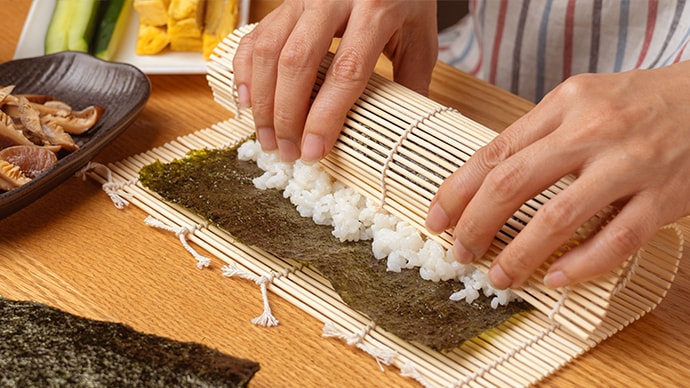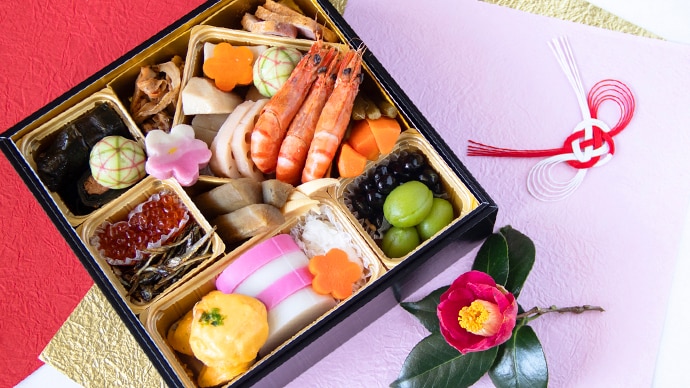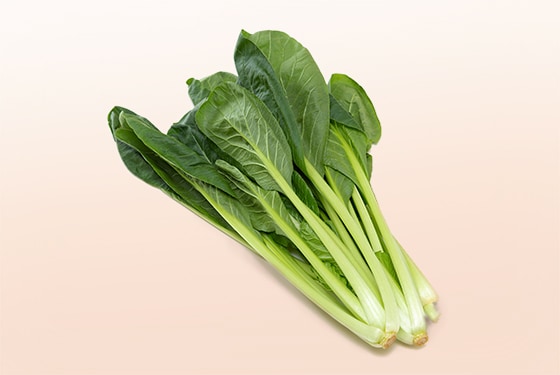
A nutritious green leafy vegetable with a mild taste that is used in a variety of dishes.
What is komatsuna?
Komatsuna / Japanese mustard spinach (こまつな in Japanese) is a green leafy vegetable native to Japan. It has a mild taste and is widely used in ohitashi (a side dish involving greens in bonito-flavored soy sauce), stir-fries, simmered dishes, miso soup, and clear soups. It has long been an indispensable ingredient in Kanto-style ozōni, which is a New Year’s soup containing rice cakes and vegetables.
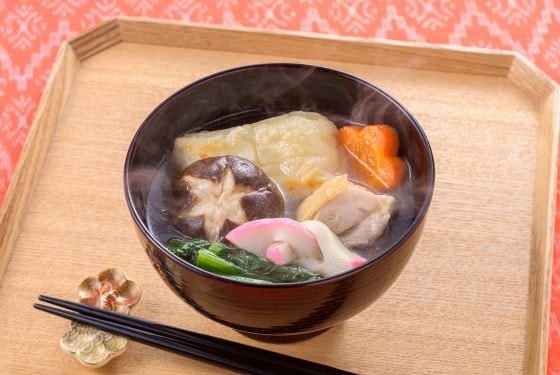
Nutrition facts
Komatsuna is rich in calcium, potassium, iron, beta-carotene, vitamin C, vitamin K, niacin, and folic acid. It can be said to be one of the most nutritious vegetables. It is particularly high in calcium, about three times the amount of spinach. Komatsuna also contains vitamins B1 and B2, which are involved in aiding the metabolism, and is a good source of dietary fiber.
As for phytochemicals, komatsuna contains lutein, which is effective in maintaining eye health. Furthermore, komatsuna contains a low amount of oxalic acid which is known to cause kidney stones, so the vegetable can also be eaten raw without worry.
As it contains a lot of fat-soluble vitamins, cooking komatsuna with oil or eating it with foods that contain fats and oils promotes nutritional absorption into the body. Eating komatsuna with soy products such as aburaage/ thin deep-fried tofu, meat, fish, etc. is also effective in helping maintain bone health and preventing anemia.
Storage to prevent food loss
If you wrap komatsuna in moist kitchen paper and put it in a plastic bag in the refrigerator, it can be stored for 2 to 3 days. In the case of freezing storage, cut raw komatsuna or the one that has been boiled and squeezed into bite-sized pieces, then put in a plastic bag in the freezer, where it can be stored for about 1 month.
Trivia
When raw frozen komatsuna is thawed naturally, the fibers break down and it becomes soft, so by pouring soy sauce or tsuyu (noodle soup stock) over top of it you can make ohitashi.
Cooking Basics
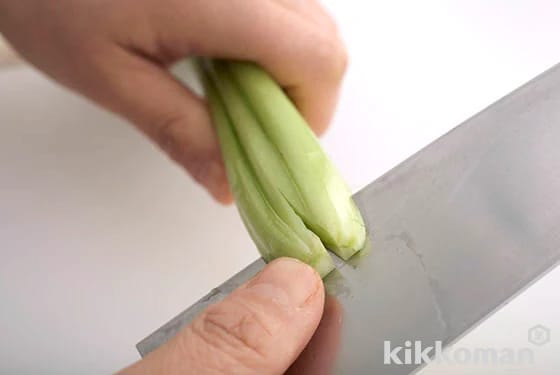
As the thick root takes longer to cook through, make a cross cut into the root to allow for faster cooking. This will also allow water to be absorbed more easily to increase crispiness.
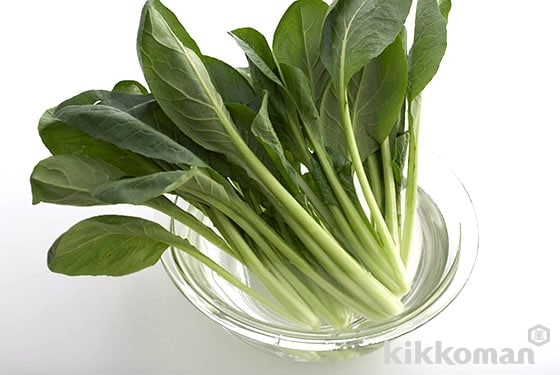
If the greens themselves are in good condition, they will have good texture when used in stir-fried and simmered dishes. Also, this step allows dirt trapped in the roots to be removed naturally.
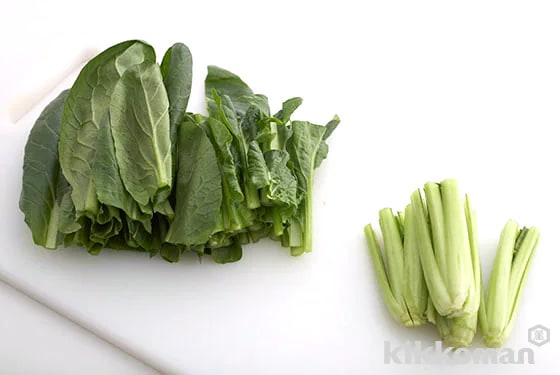
The cooking time required for stems and leaves differs. When you want to quickly saute or boil, stems and leaves need to be cut apart and added in at different times. First add in the stems, and once softened, add in the leaves to allow for even cooking.
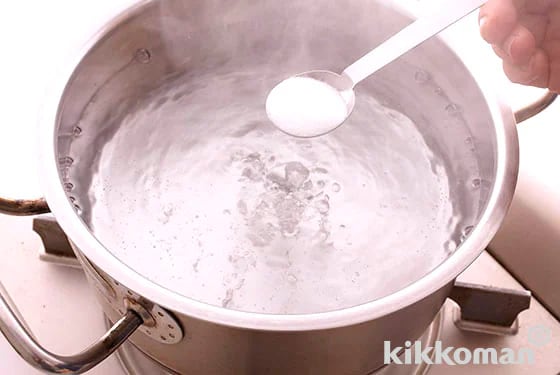
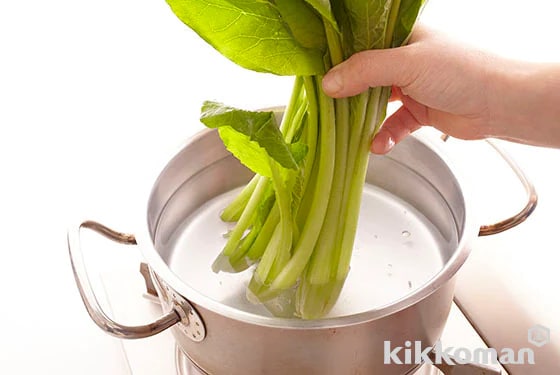
Add salt to plenty of boiling water to achieve salt concentration of about 1 - 2%, then add in the greens from the roots. After boiling for about 20 seconds, remove into cold water.


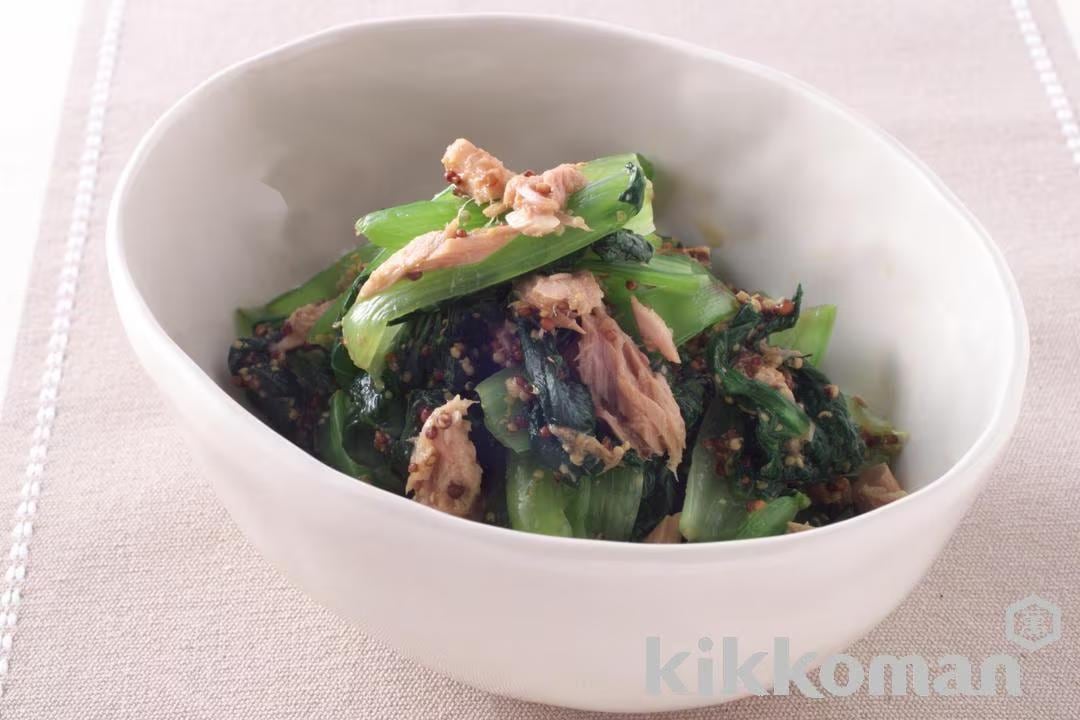
 10min
10min 86kcal
86kcal 700mg
700mg